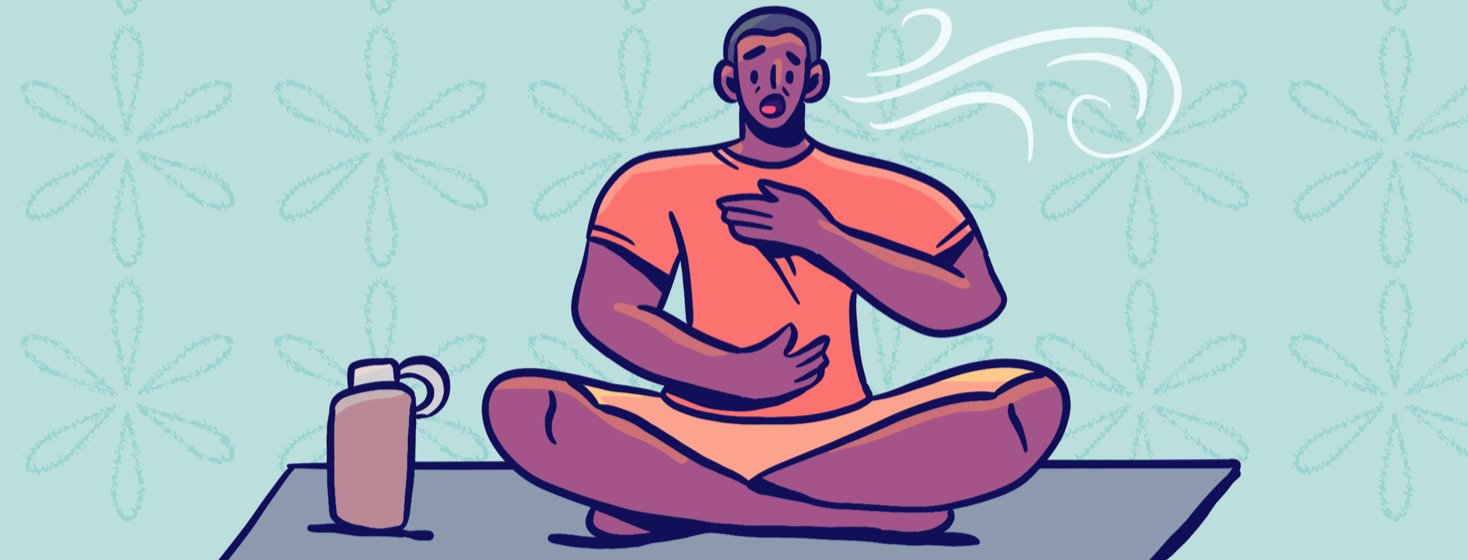Mindful Breathing Makes Me Anxious
Like many people during the pandemic, I turned to Zoom for connecting with family, enjoying virtual knitting meetups, and starting a new meditation practice. My cousin, a yoga and mindfulness instructor offered free, online meditation classes, so I convinced a few friends to join in. It was a great way to meet new people, stay connected with current friends and family, and learn how to be more mindful.
In-person versus virtual meditation classes
I tried in-person yoga classes before, and it really wasn’t my thing. I always felt like the drunk person trying to play Twister at a party. I was hopeful that the meditation class would offer some of the same benefits of yoga without feeling so awkward.
I really enjoyed the weekly sessions. My favorite was body scans; a technique to scan your body parts from head to toe, relaxing them one by one until your entire body feels like Jell-O. I needed the mantras that helped me focus on the here and now, and to stop thinking about yesterday or tomorrow.
Of course, breathing exercises are a big part of meditation practice. People with asthma are always told breathing exercises can help, especially pursed-lip breathing. This is when you breathe deep and slowly in through your nose and breathe out slowly through pursed lips (as if you were going to whistle). Now I’m a pro at pursed-lip breathing, I’ve done it for years to relax when I feel stressed, and after I take my asthma medicines to help reduce side effects like the shakes and jitters.
Mindful breathing makes me anxious
Focusing on my breath was harder than I thought it would be.
The meditation breathing exercises were different and much harder for me to do than pursed-lip breathing. Techniques like boxed breathing (inhale for X seconds, hold for X seconds, exhale for X seconds, hold for X seconds) brought on a sense of panic. While I was breathing out slowly, my brain was already focused on when I could take the next breath in. Holding my breath at the end of the exhale felt like I would never be able to inhale again.
Inhaling slowly felt great! But after a slow, long exhale my immediate instinct is to get as much air as possible into my lungs as quickly as possible. Knowing I could stop the exercises any time I wanted was not enough to ease my feeling of panic. Controlling my breathing was harder than I thought.
A connection between breathing exercises and my asthma
Breathing exercises are not just for people without asthma, right?
I must assume this is because of my decades of living with asthma. It’s hard for my mind (and my lungs, too, I suppose) to forget all those attacks that left me gasping for air. During all the emergency room visits and times I was not able to catch my breath. Those scary experiences of not being able to breathe have left me with little confidence in my ability to change my breathing patterns in the smallest way. I have a mindfulness app on my phone and use it for meditation breaks during the workday and at night when I’m trying to fall asleep. I have trouble with the deep breathing exercises on the app as well.
I am going to keep trying
My meditation practice has helped me feel calmer and taught me skills to help better cope with stressful situations. Even though I have not mastered breathing techniques yet, I’m going to keep trying. They are easily modified to meet the needs of the person doing them, and I am hopeful they will become a bigger part of my meditation practice.
How about you – have you found breathing techniques helpful?

Join the conversation